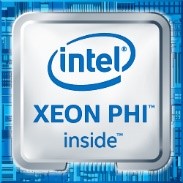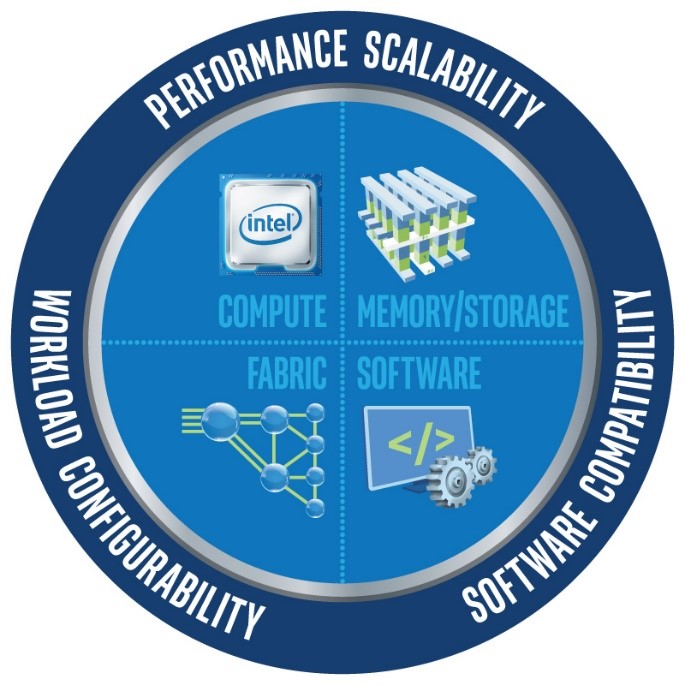Sponsored Post
Updates for Intel® Xeon® processors, Intel® HPC Orchestrator, Intel® Deep Learning Inference Accelerator and other forthcoming supercomputing technologies available soon
SC16 revealed several important pieces of news for supercomputing experts. In case you missed it, here’s a recap of announced updates from Intel that will provide even more powerful capabilities to address HPC challenges like energy efficiency, system complexity, and the ability for simplified workload customization. In supercomputing, one size certainly does not fit all. Intel’s new and updated technologies take a step forward in addressing these issues, allowing users to focus more on their applications for HPC, not the technology behind it.
 In 2017, developers will welcome a next generation of Intel® Xeon® and Intel® Xeon Phi™ processors. As you would expect, these updates offer increased processor speed and more through improved technologies under the hood. The next generation Intel Xeon Phi processor (code name “Knights Mill”) will exceed its predecessor’s capability with up to four times better performance in deep learning scenarios1.
In 2017, developers will welcome a next generation of Intel® Xeon® and Intel® Xeon Phi™ processors. As you would expect, these updates offer increased processor speed and more through improved technologies under the hood. The next generation Intel Xeon Phi processor (code name “Knights Mill”) will exceed its predecessor’s capability with up to four times better performance in deep learning scenarios1.
Of course, as developers know, the currently-shipping Intel Xeon Phi processor (formerly known as “Knights Landing”) is no slouch! Nine systems utilizing this processor now reside on the TOP500 list. Of special note are the Cori (NERSC) and Oakforest-PACS (Japan Joint Center for Advanced High Performance Computing) supercomputing systems with both claiming a spot among the Top 10.
The next-generation Intel Xeon processor (code name “Skylake”) is also expected to join the portfolio in 2017. Demanding applications involving floating point calculations and encryption will benefit from both Intel® Advanced Vector Instructions-512, and Intel® Omni-Path Architecture (Intel® OPA). These improvements will further streamline the processor’s capability, giving commercial, academic and research institutions another step forward against taxing workloads.
A third processing technology anticipated in 2017 enables an additional level of HPC customization. The combined hardware and software solution, known as Intel® Deep Learning Inference Accelerator, sports a field-programmable gate array (FPGA) at its heart. By maximizing industry standard frameworks like Intel® Distribution for Caffe* and Intel® Math Kernel Library for Deep Neural Networks too, the solution provides end users opportunity for even greater flexibility in their supercomputing applications.
 At SC16, Intel also highlighted supplemental momentum for Intel® Scalable System Framework (Intel SSF). HPC is an essential tool for advances in health-related applications, and Intel SSF is taking a place center-stage as a mission-critical tool in those scenarios as Intel demonstrated in its SC16 booth. Dell* offers Intel SSF for supercomputing scenarios involving drug design and cancer research. Other applications like genomic sequencing create a challenge for any supercomputer. For this reason, Hewlett Packard Enterprise* (HPE) taps Intel SSF as a core component of the HPE Next Generation Sequencing Solution.
At SC16, Intel also highlighted supplemental momentum for Intel® Scalable System Framework (Intel SSF). HPC is an essential tool for advances in health-related applications, and Intel SSF is taking a place center-stage as a mission-critical tool in those scenarios as Intel demonstrated in its SC16 booth. Dell* offers Intel SSF for supercomputing scenarios involving drug design and cancer research. Other applications like genomic sequencing create a challenge for any supercomputer. For this reason, Hewlett Packard Enterprise* (HPE) taps Intel SSF as a core component of the HPE Next Generation Sequencing Solution.
Additional performance isn’t the only thing supercomputing experts need, though. Feedback from HPC developers, administrators and end-users express the need for improved tools during critical phases of system setup and usage. Help is on the way. Now available, Intel® HPC Orchestrator based upon the OpenHPC software stack addresses that feedback. With over 60 features integrated, it assists with testing at full-scale, deployment scenarios, and simplified systems management. Currently available through Dell* and Fujitsu*, Intel HPC Orchestrator should provide added momentum for the democratization of HPC.
Demonstrating further momentum, Intel Omni-Path Architecture has seen quite an uptick in adoption since release nine months back. It is utilized in about 66 percent of TOP500 HPC systems utilizing 100Gbit interconnects.
With so many technical advancements on the horizon, 2017 is shaping up as a year for major changes in the HPC industry. We are excited see how researchers, developers and others will utilize the technologies to take their supercomputing systems to the next level of performance, and tackle problems which were impossible just a few years ago.
1 For more complete information about performance and benchmark results, visit www.intel.com/benchmarks




